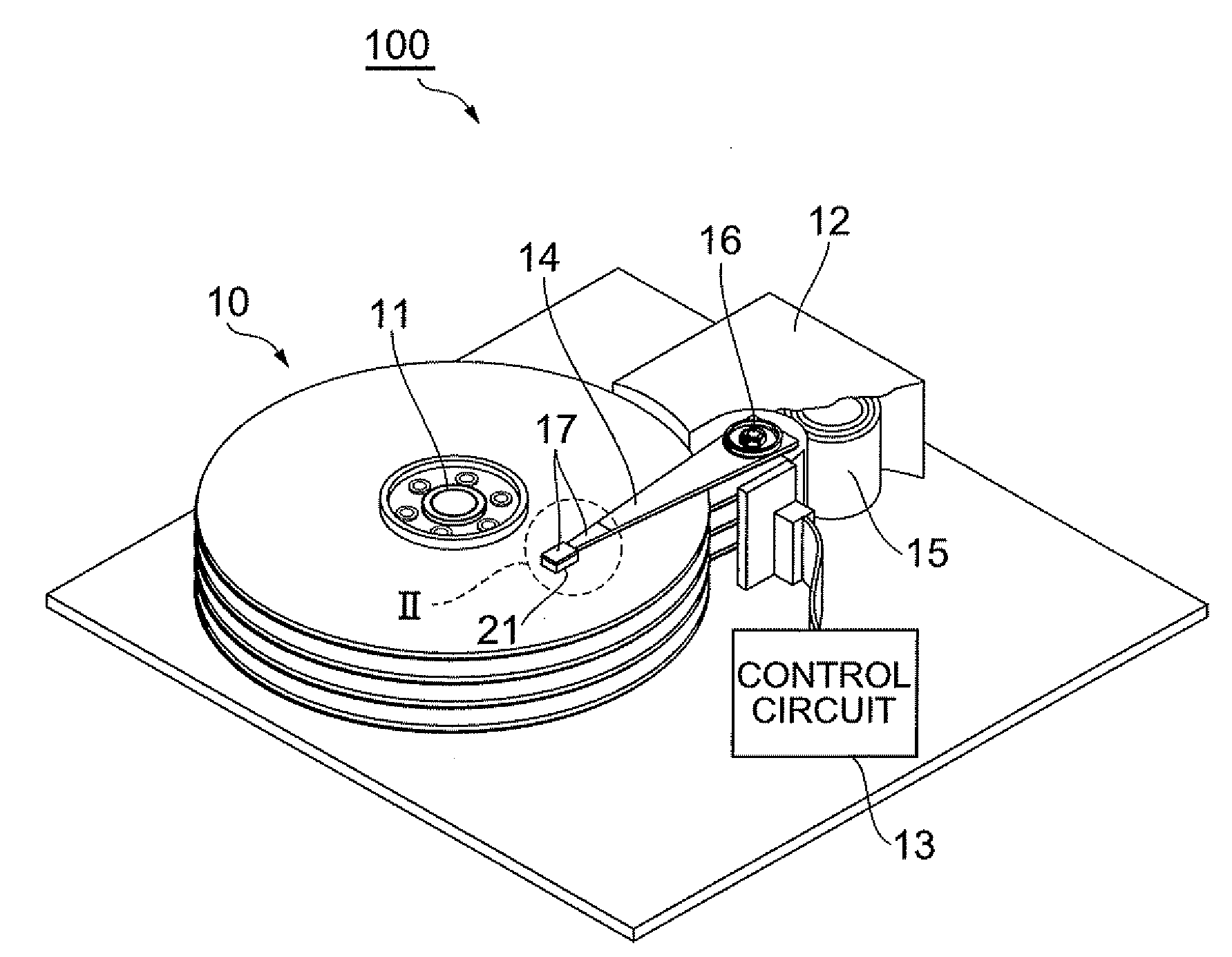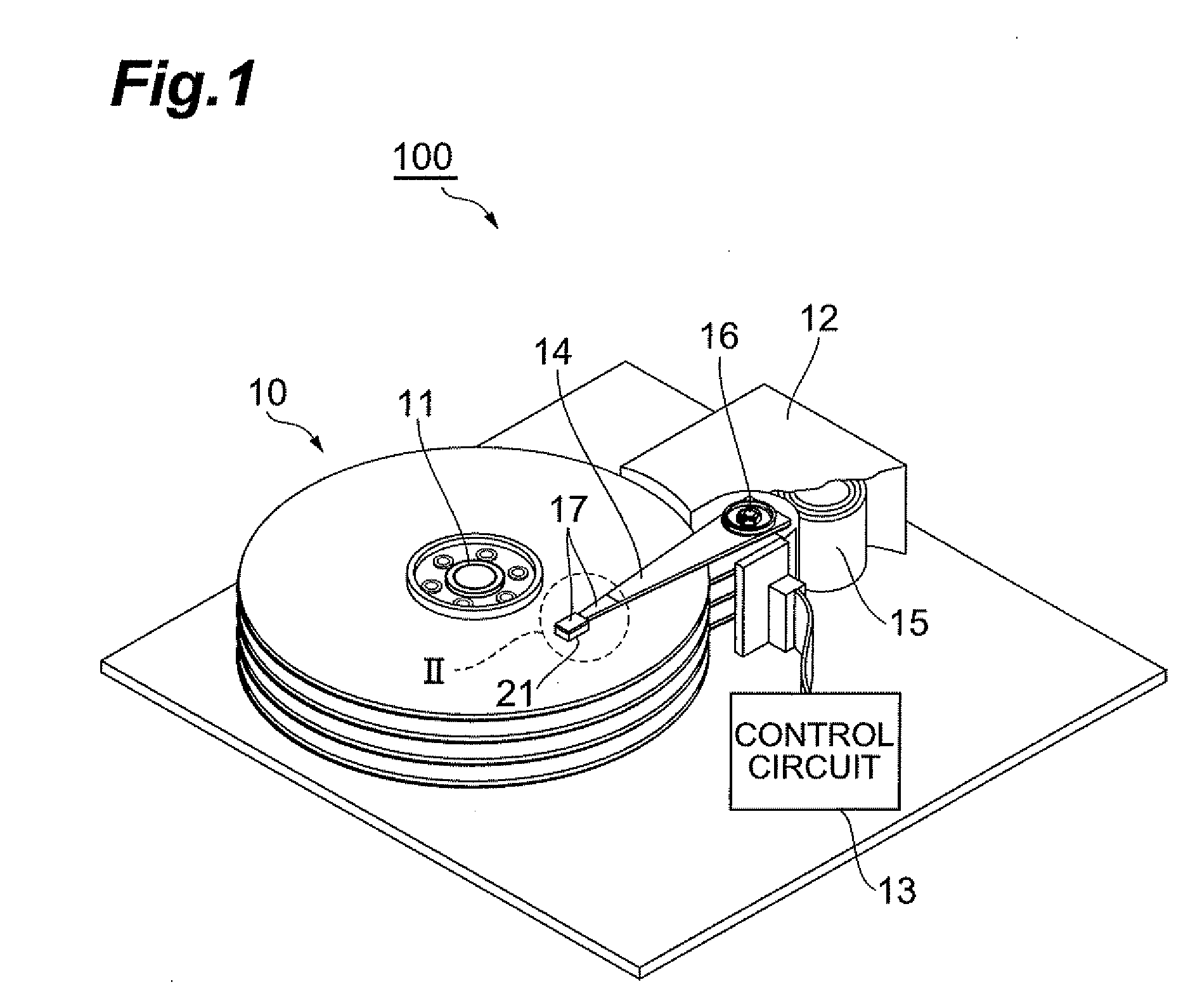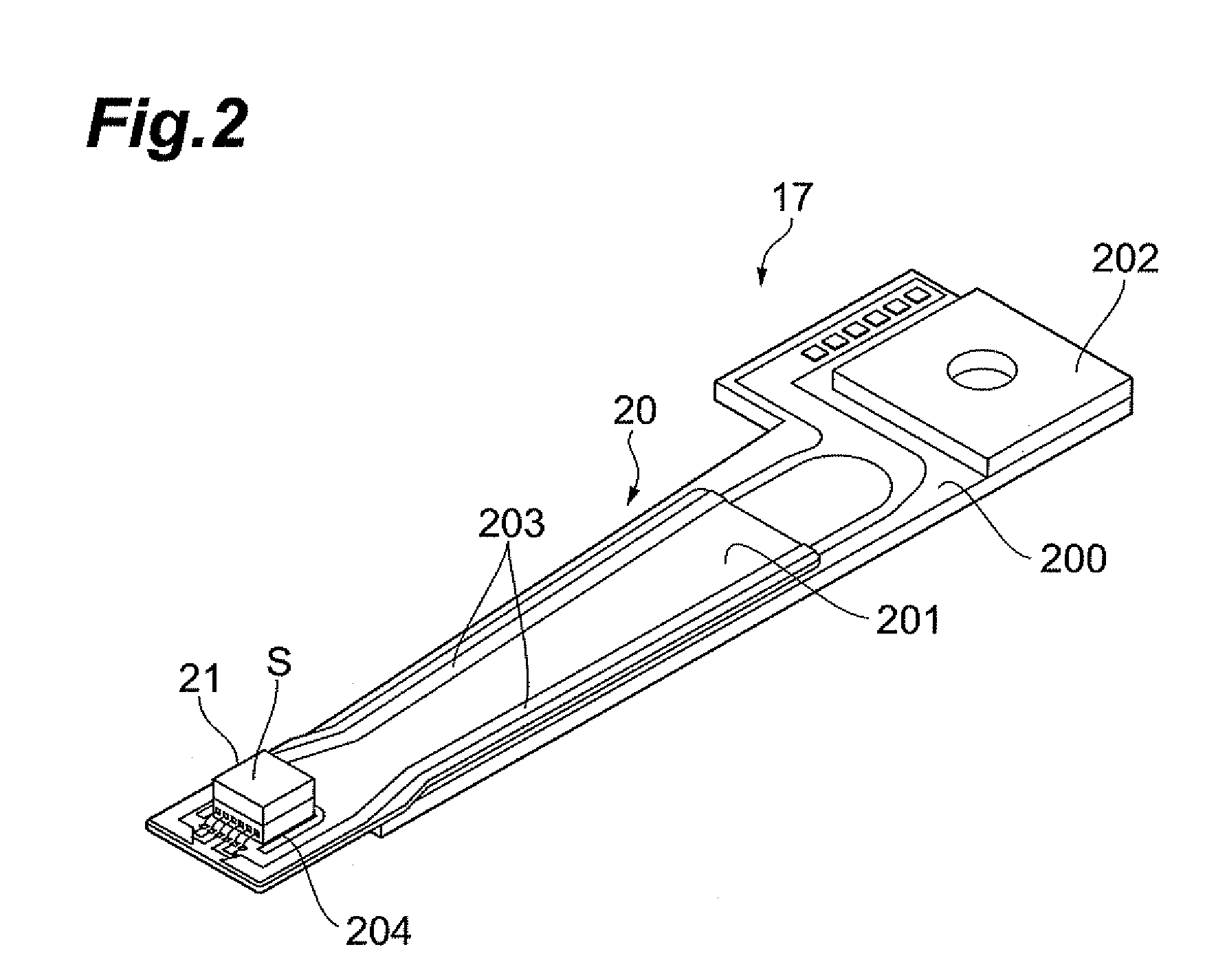Thermally assisted magnetic head and manufacturing method of same
a technology of magnetic head and manufacturing method, which is applied in the field of thermally assisted magnetic head, can solve the problems of increasing the coercivity of recording media, affecting reducing the accuracy of writing, so as to achieve high precision and precise positioning
- Summary
- Abstract
- Description
- Claims
- Application Information
AI Technical Summary
Benefits of technology
Problems solved by technology
Method used
Image
Examples
Embodiment Construction
[0056]Below, near-field light-generating elements, thermally assisted magnetic heads, head gimbal assemblies, and hard disk devices of aspects are explained. The same elements are assigned the same symbols, and redundant explanations are omitted.
[0057]FIG. 1 is a perspective view of a hard disk device of an aspect.
[0058]The hard disk device 100 comprises magnetic disks 10, which are a plurality of magnetic recording media which rotate about the rotation shaft of a spindle motor 11; an assembly carriage device 12, to position a thermally assisted magnetic head 21 above a track; and a read / write and light emission control circuit (control circuit) 13, to control write and read operations by this thermally assisted magnetic head 21, and to control a laser diode which is the light source generating laser light for thermally assisted magnetic recording, described in detail below.
[0059]A plurality of driving arms 14 are provided in the assembly carriage device 12. These driving arms 14 ca...
PUM
| Property | Measurement | Unit |
|---|---|---|
| thickness | aaaaa | aaaaa |
| magnetic flux | aaaaa | aaaaa |
| density | aaaaa | aaaaa |
Abstract
Description
Claims
Application Information
 Login to View More
Login to View More - R&D
- Intellectual Property
- Life Sciences
- Materials
- Tech Scout
- Unparalleled Data Quality
- Higher Quality Content
- 60% Fewer Hallucinations
Browse by: Latest US Patents, China's latest patents, Technical Efficacy Thesaurus, Application Domain, Technology Topic, Popular Technical Reports.
© 2025 PatSnap. All rights reserved.Legal|Privacy policy|Modern Slavery Act Transparency Statement|Sitemap|About US| Contact US: help@patsnap.com



